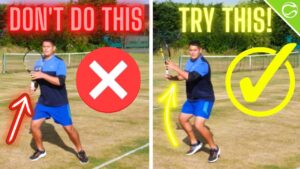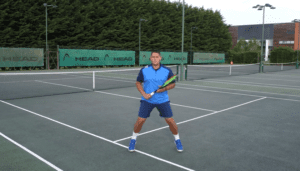
How To Serve In Tennis
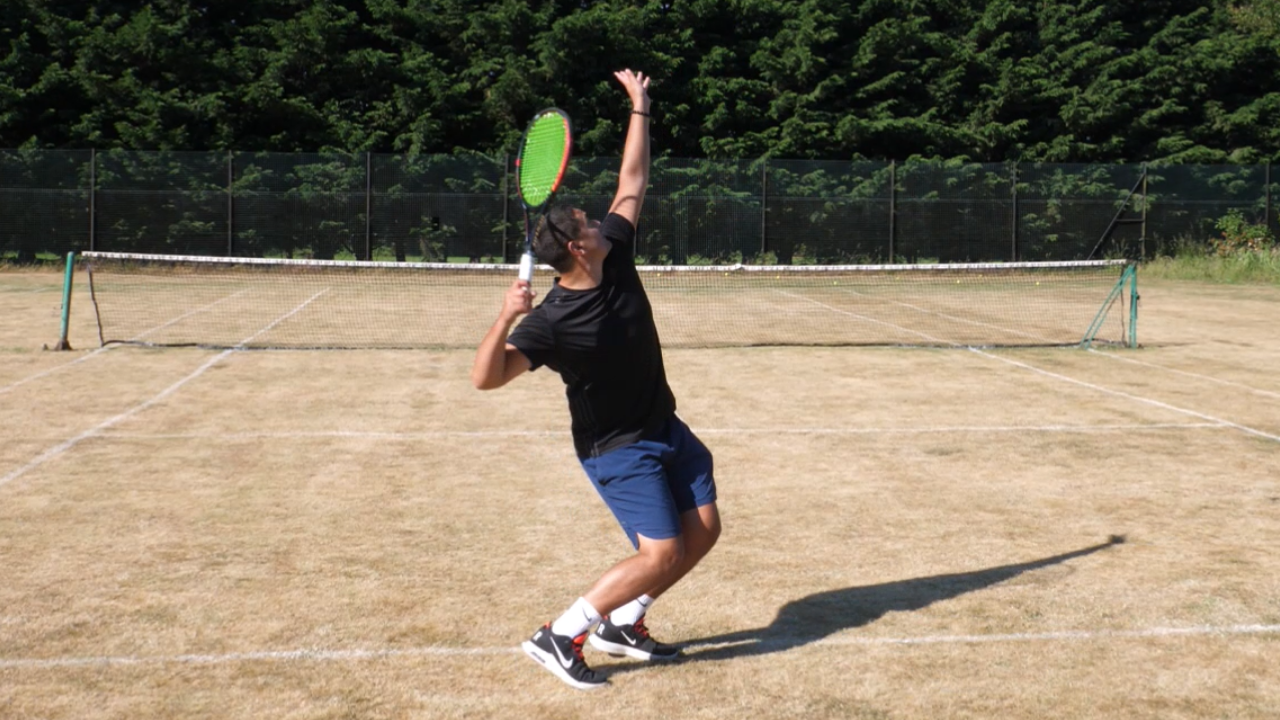
How To Serve In Tennis In 5 Steps
The most important shot in tennis is the serve.
A tennis serve starts every single point that you will play, in both singles and doubles. That’s why it’s fundamental that you know how to serve in tennis.
Being able to build a reliable, consistent tennis serve takes a lot of practice and patience.
However, many players practice serves for years but never achieve a consistent serve.
Why?

Too often, tennis players focus on the small things when it comes to technique.
They may like the way Roger Federer starts his serving motion and they try to copy that element.
Spending hours and hours working on the wrong things is the quickest way to stall your tennis improvements and build frustration.
That’s why you need a step-by-step serving guide, to show you exactly how to serve in tennis.
The following five step guide will help you build the serve you want and need.
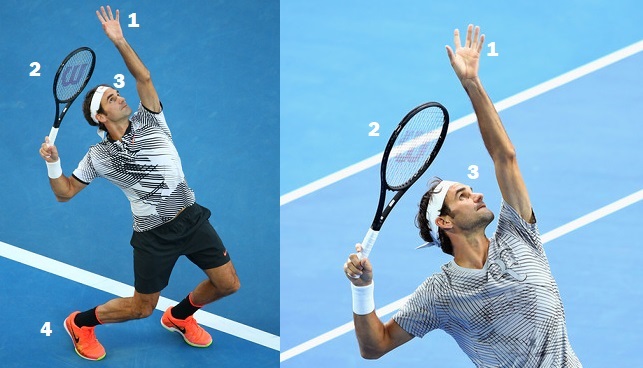
Download Our Free Serve Guide Below
Step One - The Best Tennis Serve Grip
The best grip to serve with in tennis is the continental grip.
This is the same grip you should use for your volleys, your overhead smash, and your backhand slice.
This grip allows you to use supination and pronation on your tennis serve. It also allows you to hit all the different types of serves and spin variations with the same grip.
This includes the slice serve, the kick serve, the flat serve, and a combination.
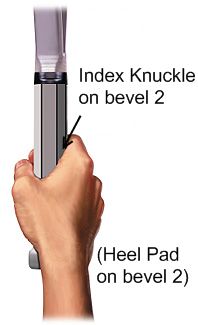
The continental grip is easily found. Place your racket out in front of your body, using your left hand.
Now imagine you were shaking hands with the grip, you should end up close to the tennis serve grip.
Try to place both your heel pad and your index knuckle on bevel two.
Don’t forget to also spread your fingers slightly. If you hold the racket like a hammer, you will struggle to supinate and pronate on the serve.

Notice that Milos Raonic really spreads his index finger out, along the grip.
This may be too excessive for your own serve, but spreading the index finger will allow you to maneuver and control the racket much easier.
Experiment with the fingers and you’ll soon see what works best for your own tennis serve.
Step Two - The Ball Toss On Serve
The next step to creating a reliable tennis serve is having a good ball toss.
The ball toss is possibly the biggest problem for most tennis players when it comes to their serve.
A wild toss will make serving extremely difficult as you’ll have to constantly adapt to new locations.
The best tennis serve ball tosses go no higher than six inches above the contact point.
The higher you toss the ball, the faster it will be traveling downwards when you try to make contact.
This makes it harder to hit the sweet spot on your tennis racket. When you toss the ball on the serve, the ball travels up, hits the peak, and then travels down.

The closer you can make contact to the apex of the ball toss, the easier it will be for you to time the serve properly.
The best servers also know the importance of serve disguise.
Much like when hitting a drop shot, a lot of the shots success will depend on the disguise factor.
If you toss the ball up very high, not only does it ruin your timing but it also gives the opponent lots of time to pick up on slight differences and make your serve much easier to read.
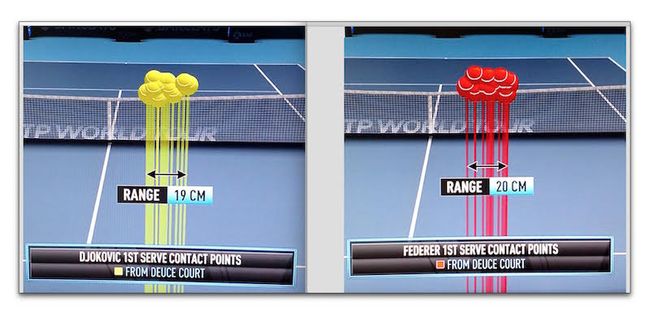
As you can see from the above image, Novak Djokovic and Roger Federer both have a very consistent ball toss, in the same zone time and time again.
How To Have A Consistent Ball Toss on Serve?
The key to having a consistent ball toss on your tennis serve starts with how you hold the ball.
One of the biggest reasons that players struggle to toss correctly is that they hold the ball in the palm of their hand and it rolls off as they release.
Another major issue is players releasing the ball too early. often by flexing at the elbow.
The remedy – hold the tennis ball comfortably in your fingers, aim to release the ball around head height and keep your arm extended throughout.
STEP THREE - THE TROPHY POSITION
What is the trophy position on the tennis serve?
Imagine you wanted to throw a ball a big distance, you’d bend your throwing arm to around a 90 degree angle, and point the non throwing arm towards your target.
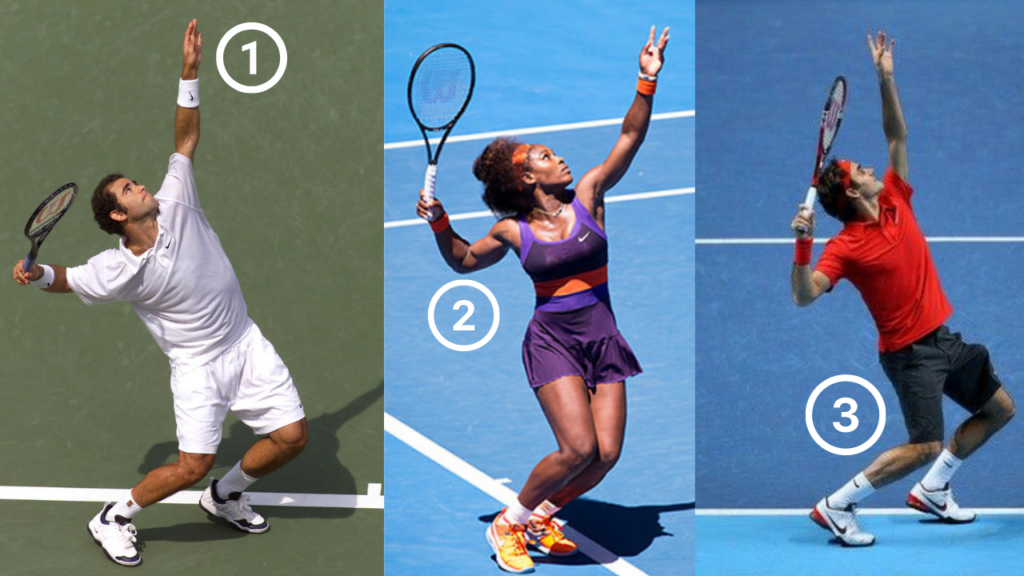
A good trophy position is very similar to a good throwing position, the main difference is the tilt of the shoulders.
On serve, the target is the contact point, whereas with a throw it might be simply forward.
The characteristics of a good tennis serve trophy pose include:
– The non hitting hand pointing upwards to the ball to help balance the body
– The hitting arm at around a 90 degree angle and the tip of the racket pointing upwards towards the sky.
– If you can, a good knee bend in this position would also help greatly.
STEP FOUR - SUPINATION AND PRONATION
What is supination and pronation on the tennis serve?
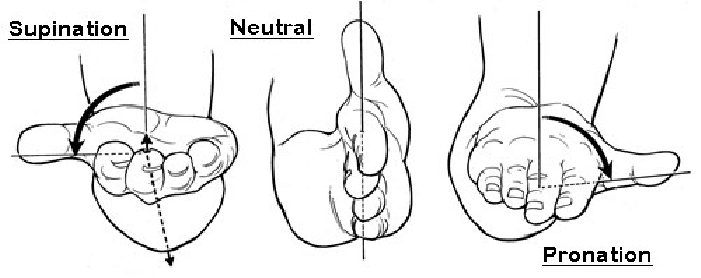
SUPINATION ON SERVE
Prior to contact, you want to achieve a position where the forearm is supinated and the racket is traveling towards the ball on edge.
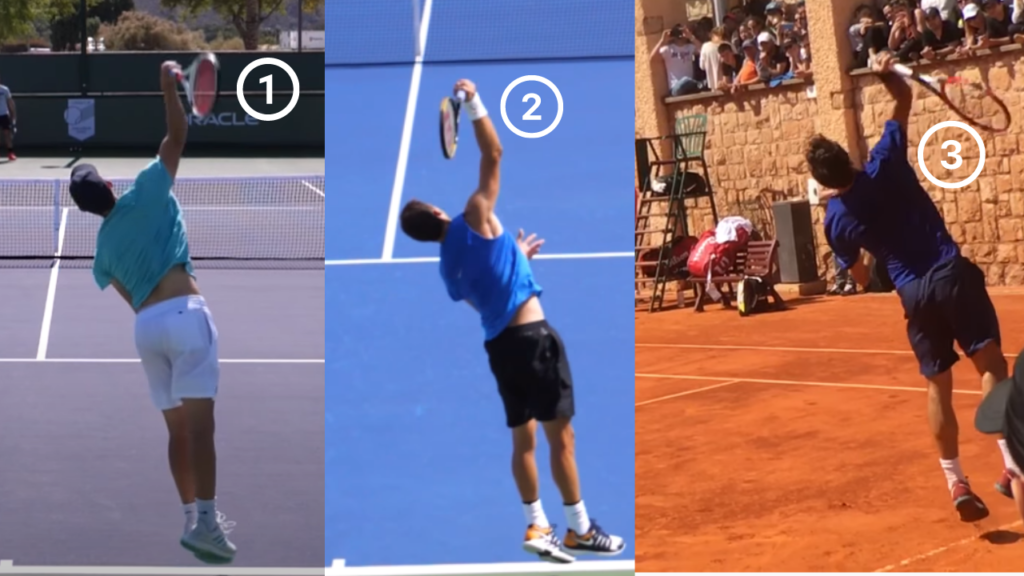
By using the continental grip you allow the forearm, arm and shoulder to supinate prior to contact.
In this position, it can look as though the player will hit the ball with the side of their tennis racket but the arm starts to pronate as the racket travels up to the ball.
Here, the side of the strings you’ll hit the ball with and the palm of the hand will be facing the left side of the court.
PRONATION ON SERVE
From the supinated position, the arm, especially the forearm, starts to pronate.
The palm will now turn from facing the left side of the court towards facing down the court, towards the target.
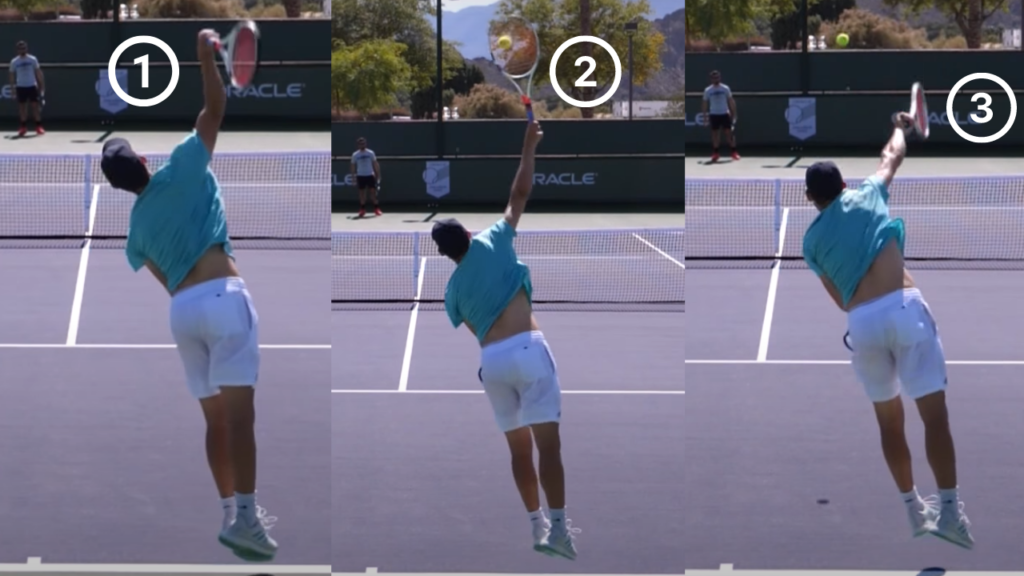
As you make contact on the tennis serve, the forearm has already pronated but not fully.
Full pronation occurs just after contact, when the palm will turn towards the right side of the court.
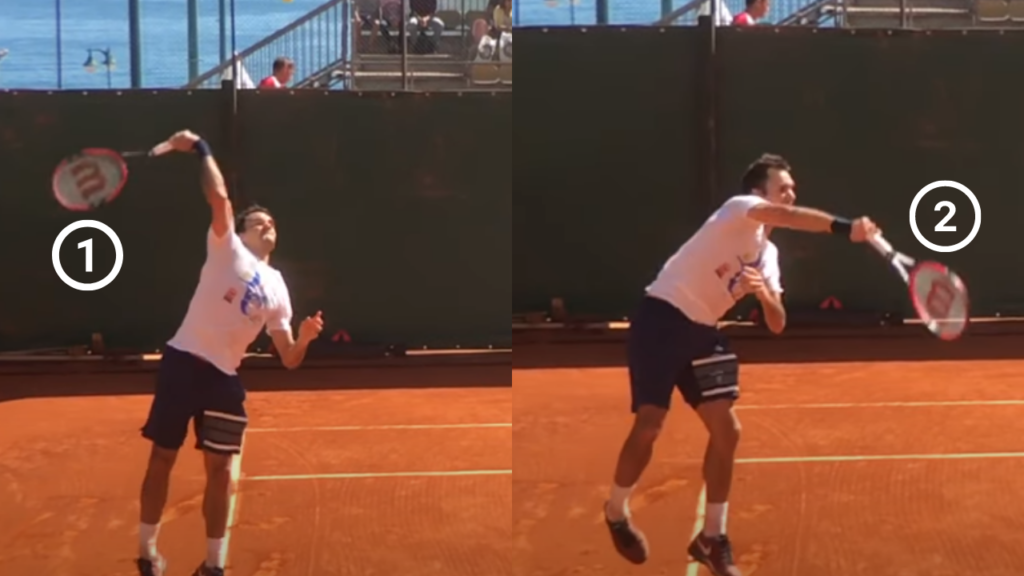
By using forearm supination and pronation, you’ll be able to easily change the direction of your serves by manipulating the strings slightly.
This is the ideal way to accelerate the tennis racket head during the contact zone.

Download Our Free Serve Guide Below
STEP FIVE - THE FOLLOW-THROUGH
The last step in hitting a good tennis serve is the follow-through and finish.
Often, tennis players will injure themselves by using an incorrect follow through that stresses the shoulder, elbow or wrist.
Ideally, after full pronation has occured, you’ll start to bend the elbow and the racket and hand will finish around your left pocket.
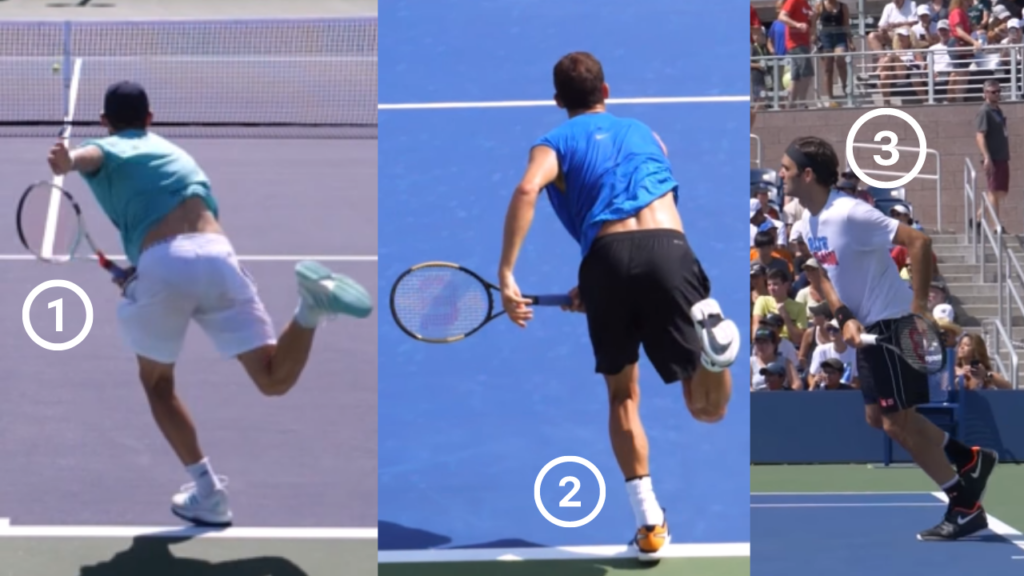
This will allow the shoulder muscles to slow down in a natural and relaxed way without stressing the shoulder or elbow joint.
Try to focus on three main points when you finish the serve:
– Arm stays loose
– Land inside the court unless going for a kick serve
– Head stays up, with the eyes tracking the ball.
If you’ve enjoyed this tennis serve lesson and want more help, make sure to download our FREE serve guide below



